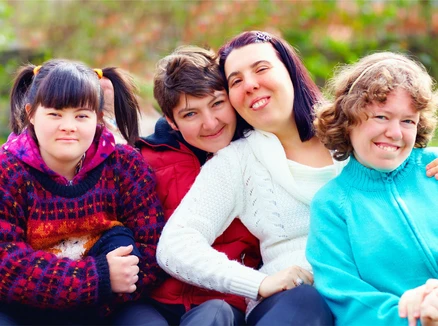Profile and statistics
Find all the necessary information on participation and community profiles.
International and Australian data indicates that screening participation is lower across bowel, cervical and breast screening programs for people with disability, with most studies focusing on people with intellectual disability.
It’s important to note that the term 'disability' means different things to different people. Not everyone with disability chooses to use this label, and not everyone with disability can access a formal diagnosis. This means that comparing research and data collection on cancer screening for people with disability can be complicated, as researchers may use different definitions of 'disability'.
Bowel, cervical, breast and lung screening programs operate in different ways; therefore, different information is available for each one.
Bowel screening
Participants return a detailed form with their completed screening kits, which asks them to self-identify as being an Aboriginal and Torres Strait Islander, having a disability or speaking a language other than English at home. Census data is used to provide the denominator (total number of people in Australia with disability). Only 70% of respondents answered the question about disability status. Thus, this method only allows for estimates of participation by those with a disability.
Cervical screening
According to the Australian Government's 'Screen Me' campaign, people with disability are less likely to undertake cervical screening than the general population.
An Australian systematic review and meta-analysis found that just 35% of eligible people with intellectual disability have had cervical screening.1
Information about the women and people with a cervix taking part in cervical screening is restricted to what is collected on the pathology slip when a test is taken. Date of birth and postcode information is held on the Victorian Cervical Cytology Registry which can be used to look at participation by age, location, and socio-economic status, but not other demographics such as disability.
Breast screening
Reported data on mammograms indicate that 91.1% of women aged over 60 with intellectual disability have had a mammogram in the past two years, however only 69.6% reported ever having had a mammogram. For women aged 50 to 59, 78.1% indicated that they had had a mammogram in the past two years, and 61.3% had ever had a mammogram.2
Lung screening
There is currently no Australian data on the rates of lung cancer among people with disability.
References
1. Power R, David M, Strnadová I, Touyz L, Basckin C, Loblinzk J, & Bateson D. (2024). Cervical screening participation and access facilitators and barriers for people with intellectual disability: a systematic review and meta-analysis. Frontiers in Psychiatry, 15, 1379497.
2. https://www2.health.vic.gov.au/public-health/population-health-systems/health-status-of-victorians/survey-data-and-reports/health-survey-of-people-with-an-intellectual-disability/health-survey-of-people-with-an-intellectual-disability-2013. Accessed July 2019
